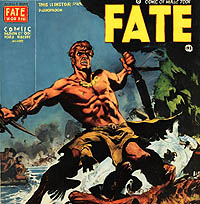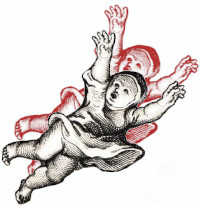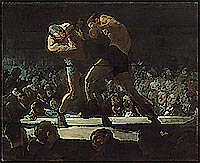Prologue
A contemporary of Augustus, Virgil and Jesus Christ, Ovid constructed a song of Creation which he prayed for the transformative powers to bless. Unlike a modern person, Ovid believed in many gods, not simply one God and an evil adversary. Having listened 8 times to the first 2 hours of this remarkable work, which I merely skimmed some 23 years ago, I would offer some impressions.
These impressions, I must render as reflections upon other ancient works and of our modern delusions concerning these. The Modern Metaphysical Mind separates the ancient world into vast regions of utter ignorance and evil [Hellas, Scythia, Indian, Rome, Germania and the Celtic world] and the one true view, that of The Bible.
Conversely, the Modern Rational Mind discounts all of the metaphysical beliefs of The Bible and the many epics, from Gilgamesh, down through The Iliad, The Odyssey, The Aenied, the Argonautica, Beowulf and the Song of Roland, [1] as all being tales of folk and faerie, divorced from rational observation of the Physical World of reality.
Considering that the priests and readers of these ancient pagan traditions where the very minds who accepted Christian Testament and Gospel, ordained as a state religion, I have in the past, as part of the Aryas project, considered the congruent elements of The Old Testament as they would have made perfect sense as written to heathens and pagans of their own age.
Conversely, modern Christians refuse to read their own tradition as written, insist on disagreeing with God’s own words when he speaks to Moses and placing modern pseudo science semantics in his divine mouth. In Exodus, God Almighty refers to himself as one of numerous gods, to the point of describing himself as jealous. The modern mind twists this into a belief that the Prime Power in the universe was jealous, who refers to making man “In Our Image” as the only power, with other powers adjudged as fictive ciphers of human fancy.
As a contemporary of the architect of Christianity, Paul, I think that Ovid has something to offer. I am chiefly pointing out where Ovid’s account of creation and transformation agrees with The Bible and other ancient documents, and also how it supports alternatives to some of the childish views of modern science.
…
Impressions
Ovid’s description of Chaos is very compatible with the account of “The Deep” above which the spirit of God moved in Genesis. It is not identical, but is, compared to scientific models of creation, virtually the same account as found in Genesis. One will find more similarities than differences.
Ovid declares that One God, “Creator of the World,” a masculine force, transformed formless Chaos by division and combination into land, water, air, ether [space, or the void]. He does not know which god this was!
No wonder the Romans adopted Christianity so readily. It had one prime answer they were unsure of.
According to Modern Science, the Romans had no knowledge of geography beyond the British Isles and the Indian Ocean.
Ovid knew about the Ganges [describing it as one of the many rivers that burned during Phaeton’s cataclysm] and assumed his readers did as well. He also described The Creator as having constructed five climate zones upon the “sphere” shaped earth: a central zone too hot to live [the Sahara, to Ovid Lybia], two poles covered in perpetual snow, and two “temperate zones” between the tropics and the poles. Additionally, bears were only present at the north pole, not the south pole. It seems the Romans got around.
The various tales of Jupiter impregnating human women, related to those described in The Book of Enoch and the New Testament, are irritating to the modern adult ear, until one detects that they seem to be metaphors for mass migration involving cattle herding [Io] and hunting [Callisto].
As with Genesis, animals are made first and man are made to rule over them in the image of God. Likewise, as with Genesis, there are two alternative creations of mankind. In Genesis these are contradictory, God creating man twice, once as a golem. In Ovid two possibilities are given, with the golem option possibly conducted by Prometheus, but a seeding of the world with man’s seed directly by the prime Creator also considered. In Ovid, the importance of man is twofold, that he is made in the divine image and that he is upright and thus may, and will be compelled to, face the stars and the heavens rather than having his muzzle to the ground. In Ovid, man ultimately comes from heaven.
“What was still missing was a more spiritual being… he gave man a face that could look up...”
Four Ages are presented:
The Golden Age is presented as identical to the Garden of Eden and is ruled over by Time. The Oak of Jupiter is there. The earth does not have to be tilled to coax forth food. “It fostered faith and right,” with no laws needed, no forts, swords, helmets or war horns. “It was always spring time.”
The Silver Age is still idyllic, though it is ruled over by Jupiter [Almighty, Time-Holder, he who resides outside of Time and has imprisoned Time.] This is “less favorable than Gold,” Jupiter introduced the seasons and “men first moved to houses.”
The Bronze Age is harsher, “a bronze race with fiercer natures,” brutal but pious, in which the need for war rises.
The Iron Age is the first age to see ships. Ironically, it was iron wielding tribes in ships that brought down the Bronze Age in the 1100s B.C. “Honor truth and faith,” were replaced by cheating, lying and stealing. This is the common age of mankind, of Hellas and Rome and the Bible.
During the Iron Age “Giants” tried to assault heaven by piling mountains atop one another and were smitten down by God, very much reflecting the Tower of Babel and as well Milton’s Account of the rebellion and casting down of angels and consignment to an underworld in Paradise Lost.
Two cataclysmic tales are related.
The story of Phaeton, son of The Sun, [2] whose sister is the moon, piloting the chariot of heaven and setting the world on fire agrees with Native American legends about a burning of the world, as well as recent burn evidence, that most of the northern hemisphere burned up about 11,000 years ago during the Younger Dryas Event. Ovid agrees with the Egyptians and Herodotus that the head of the Nile is hidden in inner Lybia [the Sahara] and that this river hid its head when the world burned. The ancient source of the Nile is in the Western Sahara, east of the Atlas mountains, something that Science Fiction writer Phillip Jose Farmer got right but modern science cannot fathom.
Of interest is how only Ethiopians among Africans were black in Ovid’s time, with cappoids still dominating the Sahara, and that the bringing of the sun too close by Phaeton was blamed for causing Ethiopian blood to rise to near the skin and cause dark skin. [3]
The other interesting cataclysm is nearly identical to the Flood described in Gilgamesh and Noah. [4] God is horrified by the crimes of mankind, personified most sanguinely in the behavior of Lycon [the Wolfman] who is a cannibal and werewolf besides. Note that in Amerindian tribal lore, three cannibal tribes of new England Mohawk or Mohawg, Mohegan and Mahican meant wolf or man eater or both. I am wondering if the invasions of Arуan tribes with man-eating war hounds, such as the Romans used and the Spanish would use to great effect in America, is contained in this myth. The Almighty decides on a flood rather than a fire that might scorch heaven itself, to wipe out the human race. After the flood a single man and woman are left to re-people the earth.
Just as in Genesis, where God activates other superhuman agencies, or powers in the work of creation, the Creator and later Jupiter relies on lesser powers.
Ovid describes the Milky Way as the palace of heaven and insists that Rivers and the spherical Earth, are living things.
…
Notes
-1. It is of interest that Ovid places the cutting down of a mountain pine to make the keel of a ship for use in warring upon other lands, as a mark of great evil and indicative of the advent of the sorrowful age of Iron, and that mining is a violation of the Earth and brings iron and gold, both being equal tools of war. All of these poetic works involve ship borne war and migration.
-2. Phaeton’s story reminds this reader of Gilgamesh and the Scorpion People and his race against the sun through the underworld. In both tales of fire, Scorpio is an important menace.
-3. Echoed in the tale of Icarus as well.
-4. Echoed in the myth of Atlantis related by the Egyptians through Plato.











